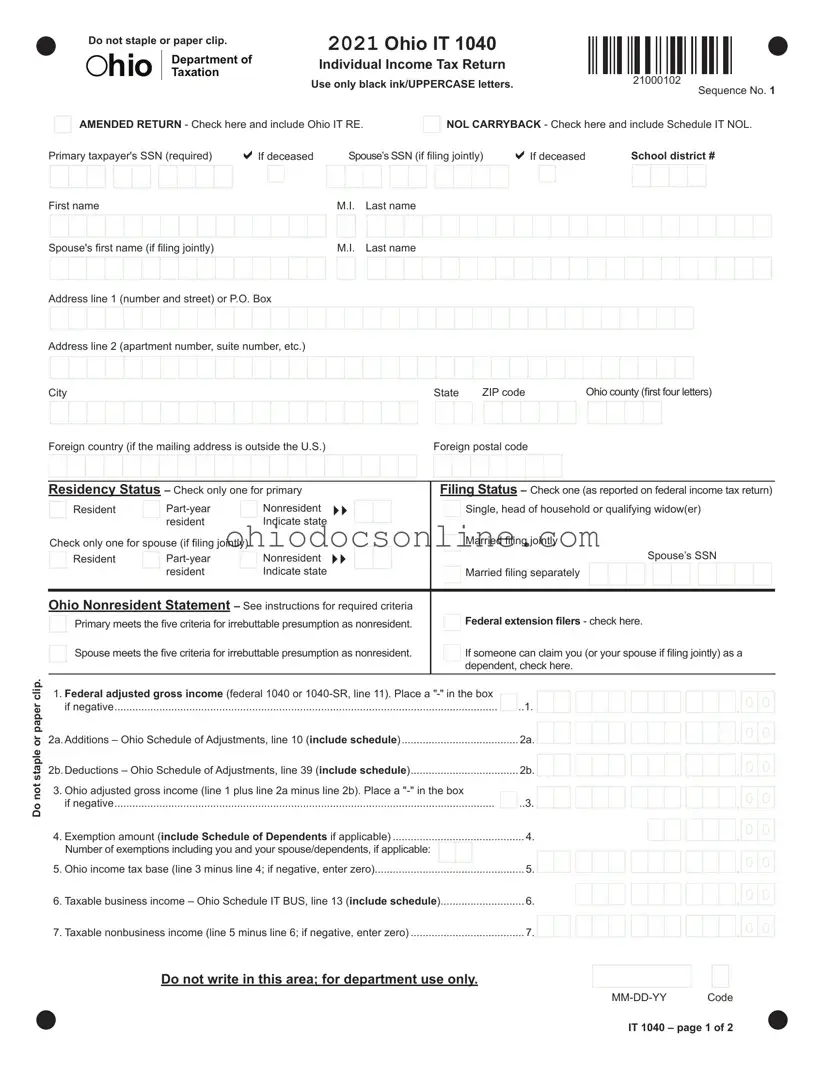Ohio It 1040 Template in PDF
The Ohio IT 1040 form is the official document used by residents to file their individual income tax returns in Ohio. This form allows taxpayers to report their income, claim deductions and credits, and calculate their tax liability. Understanding how to accurately complete the IT 1040 is essential for compliance and to ensure any potential refunds are received promptly.
Open Editor
